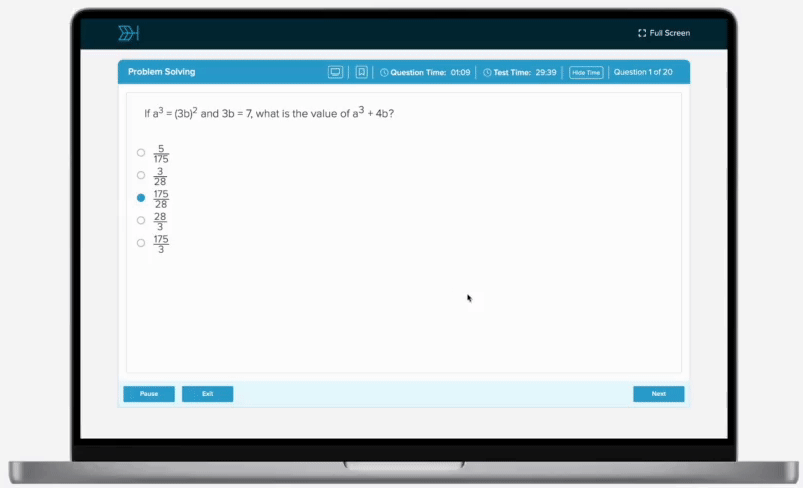Jack has two stamp collections. One stamp collection consists of only US stamps and the other of only European stamps. He sold his US collection at a profit of 30% of the original purchase price and sold the European collection at a loss of 20% of the original purchase price. If the original purchase price for the US collection was $18,000 and the original purchase price for the European collection was $20,000, what is the total revenue earned from the sale of his two stamp collections?
$23,400
$31,400
$36,400
$39,400
$41,400
 Scott Woodbury-Stewart
Founder and Expert GMAT Instructor
Scott Woodbury-Stewart
Founder and Expert GMAT Instructor

Text Solution:
We need to determine the revenue from the sale of the European and US stamp collections. To determine this, we can use the profit equation. Let’s start with the US collection.
We know that Profit = R – C, where R = revenue and C = cost. We are given that Jack earned a 30% profit, of the original purchase price, on the sale of his US collection. Another way to say this is that Jack’s profit was 30% of his cost or Profit = 0.3C. Thus we can set up the following equation:
⇒ Profit = R – C
⇒ 0.3C = R – C
⇒ 1.3C = R
We are given that Jack purchased his US collection for $18,000 so we can plug this in for C.
⇒ 1.3(18,000) = R
⇒ R = $23,400
Next, we are given that Jack sustained a 20% loss, of the original purchase price, on the sale of the European collection. Another way to say this is that Jack’s “profit” was negative 20% of his cost or Profit = –0.2C. Thus we can set up the following equation:
⇒ Profit = R – C
⇒ –0.2C = R – C
⇒ 0.8C = R
We are given that Jack purchased his European collection for $20,000 so we can plug this in for C.
⇒ 0.8(20,000) = R
⇒ R = $16,000
Thus the total revenue = $23,400 + $16,000 = $39,400









